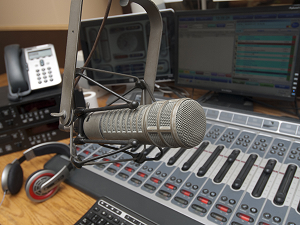Category Archives: Sober living
Causes And Risk Factors Of Alcoholism
Content
Such patients would benefit from treatment
by a pain specialist (3). 1Adoption studies compare the
risk of alcoholism in biological relatives with the risk in adoptive relatives
of alcoholics (e.g., an adopted-away child of an alcoholic parent). Psychosocial or behavioural interventions that reduce the risk of alcohol dependence during adolescence could contribute to preventing depression in young adulthood. Cultures where drinking is considered shameful may cause alcoholics to hide their condition and avoid treatment due to the stigma of being labeled an alcoholic. The graphic below is a visual interpretation of the findings from her research.
Intermediate familial alcoholics drink on an average of 172 days a year, consuming five or more drinks on 54% of those days with a maximum of 10 drinks. Functional alcoholics make up 19.4% of alcohol-dependent individuals. They also have a later age https://stylevanity.com/2023/07/top-5-questions-to-ask-yourself-when-choosing-sober-house.html of first drinking (average of 19 years) and a later onset of alcohol dependence at an average of 37 years. They tend to drink alcohol every other day, an average of 181 days per year, and they consume five or more drinks on 54% of those days.
What causes alcohol use disorder?
HICS works with regional partners and stakeholders including health care service providers, human service systems and local community resources to offer a comprehensive and welcoming system of care. In the United States, the Diagnostic and Statistical Manual of Mental Disorders (DSM) is the most common diagnostic guide for substance use disorders, whereas most countries use the International Classification of Diseases (ICD) for diagnostic (and other) purposes. The two manuals use similar but not identical nomenclature to classify alcohol problems. It’s a disease of brain function and requires medical and psychological treatments to control it. Over the long- or medium-term, excessive drinking can significantly alter the levels of these brain chemicals.
- “Recognizing early on that there is a potential problem increases the likelihood of addressing it in a timely basis,” and can curb the potential side effects before they take place, she says.
- Before you know it, you’re heading to every company happy hour, drinking more frequently and even craving alcohol after a long workday – all warning signs of AUD.
- The datasets generated and analysed during the current study are not publicly available due to the data protection regulations but are available from the corresponding author on reasonable request..
- With all alcoholic beverages, drinking while driving, operating an aircraft or heavy machinery increases the risk of an accident; many countries have penalties for drunk driving.
Sam eventually realised he was addicted to alcohol when he tried to give it up. Doctors were unable to identify what was wrong with him – they told him he had a virus and sent him on his way. The experience culminated with him being signed up to a drug and alcohol service, and he did a 10-day detox in an addiction centre. Sam started drinking when he was in his mid 20s after a friend put vodka in his drink as a “joke”. At that time, he had just recovered from bulimia, a condition he had been battling since he was a teenager growing up in Liverpool.
What Is Alcoholism?
This causes the body to crave alcohol in order to feel good and avoid feeling bad. Alcoholism, now known as alcohol use disorder, is a condition in which a person has a desire or physical need to consume alcohol. Get professional help from an addiction and mental health counselor from BetterHelp. Alcohol treatment professionals work with you to create a personalized comprehensive recovery plan with measurable goals.

However, among persons with lifetime dependence, early-onset drinkers were not more likely to experience multiple episodes, but they were more likely to experience episodes of longer duration (Table). Among those who began drinking before age 14 years, 58% experienced an episode lasting more than 1 year compared with 39% of those who waited until they were 21 years or older to begin drinking (Table). Almost 66% of chronic severe alcoholics have sought help for their alcoholism. They have the highest rates of attendance at self-help groups, detoxification programs and specialized rehabilitation programs, and the highest rates of treatment in inpatient programs. When seeking treatment, they tend to turn to social workers, psychologists, psychiatrists and private physicians. About 31% of functional alcoholics have a close family member who also has alcohol dependence.
Understanding the Five Types of Alcoholics
This analysis underscores the importance of systematically exploring and counseling adolescent patients about their drinking practices. Nearly half (46%) of drinkers who developed alcohol dependence began drinking at 16 years or younger, although only one quarter of drinkers started by that age. Other measures of adolescent risk taking not included in the survey could not be assessed as potential confounders.
- European
studies (17–19) have shown that acamprosate not only reduces the risk of
heavy drinking, but nearly doubles the likelihood that patients will achieve abstinence. - If your pattern of drinking results in repeated significant distress and problems functioning in your daily life, you likely have alcohol use disorder.
- The expectations an individual has about drinking also play a big role.
Alcohol Withdrawal Seizure an overview
Content
While under-stimulated, they create a reverse effect, making seizures more likely to occur until they readjust to the absence of alcohol, leading to alcohol withdrawal seizures. Because alcohol withdrawal seizures are a symptom of severe acute withdrawal syndrome, they should be treated as such. Patients should be admitted and close monitoring should be available, assessing the patient every 1 to 2 hours for up to 6 to 24 hours (70). As mentioned above, the revised CIWA-Ar scale can be applied to grade the severity of alcohol withdrawal (62). It has prognostic value, as patients with scores less than 10 generally do not need pharmacological treatment. However, symptom-triggered therapy based on the CIWA-Ar protocol depends on correct application of the inventory (16).

Also, alcohol tends to act like gamma-aminobutyric acid (GABA) in the brain. In the United States, the legal age for consumption of alcohol is 21 but, as with all things, people willfully break the law every day. As with almost all things, when used in moderation alcohol is pretty harmless. Having a bottle of beer or a glass of wine on occasion alcohol withdrawal seizure isn’t likely to cause any problems, and it’s almost certain that it won’t lead to a seizure. That said, as we’ve seen before, some people don’t have the switch in their brain that lets them drink in moderation. For detection of alcohol overuse, questionnaire-based interviews are reported to be more sensitive than any biomarker (04).
Recent Activity
These can include isopropyl alcohol, commonly known as rubbing alcohol, which can lead to acidemia without ketosis as well as hemorrhagic gastritis. Ethylene glycol (antifreeze) ingestion can lead to an altered sensorium, seizures, and severe renal dysfunction with acidemia that may require the initiation of hemodialysis. Methanol is rarely ingested as an ethanol substitute but can result in multisystem organ failure, blindness, and seizures. Until the 1980s, it was generally believed that the actions of ethanol on biologic systems largely result from alterations in the fluidity of cell membranes, perhaps, with secondary effects on integral membrane proteins.
What does an alcohol withdrawal seizure look like?
The jerking slows and stops after a few minutes. Their face may look a bit blue or darkish if they're having trouble breathing or the seizure goes on too long. They may lose bowel or bladder control as the body relaxes.
This is because most people don’t consume enough alcohol frequently enough to cause a physical dependence on it. Alcohol use disorder (AUD) is the term for people who have issues with alcohol, causing them to drink uncontrollably and impulsively. In general, withdrawals only happen when people drink copious amounts of alcohol.
Alcohol Detox
Alpha2-adrenergic agonists like clonidine and dexmedetomidine should not be used alone to prevent https://ecosoberhouse.com/s or delirium as they “do not treat the underlying pathophysiology” (70). Paradoxically, length of stay in the meta-analysis favored standard benzodiazepine therapy when analyzing cohort studies, but dexmedetomidine adjunctive therapy was significantly favored when randomized controlled trials were analyzed. Data on dexmedetomidine use are limited in alcohol withdrawal syndrome, and conflicting results require further investigation with randomized controlled trials. A Cochrane review of studies using baclofen for acute withdrawal syndrome found very low-quality evidence and no greater efficacy when compared to placebo, diazepam, and chlordiazepoxide (33). Seizure risk and delirium were not assessed as outcomes, and the reviewers concluded that there was insufficient and very low-quality evidence to draw any conclusions (33). In addition, alpha 2-adrenergic agonists (clonidine), beta-blockers, or dexmedetomidine should not be used in the prevention or treatment of alcohol-withdrawal seizures (70).
If you are detoxing in a facility, your medical staff will administer medications and help alleviate the worst of the symptoms. If you are attempting to detox independently, be sure you have a responsible adult watching closely to ensure your safety. If your doctor thinks you might be going through alcohol withdrawal, they’ll ask you questions about your drinking history and how recently you stopped. If you drink alcohol heavily for weeks, months, or years, you may have both mental and physical problems when you stop or seriously cut back on how much you drink. At Live Free Recovery Services, we understand the dangers that come with addiction and withdrawal. That’s why we offer medication-assisted treatment for not just those suffering from alcohol addiction, but any form of substance abuse where medication can help with the withdrawal and recovery process.
Generalized onset tonic-clonic seizures
WSP mice show less ethanol conditioned taste avoidance than WSR, but greater ethanol place preference (Chester et al., 1998; for review, see Ford et al., 2010). WSP and WSR lines have also been used to map genetic loci contributing to differences in alcohol withdrawal severity (Bergeson et al., 2003; Ehlers et al., 2010; Buck et al., 2012). Evidence from clinical and basic research studies also suggests that androgens can have antiseizure effects.
A 62-year-old male with a past medical history of hypertension and alcoholism was brought to the emergency department on a Monday morning with a suspicion of epilepsy. The patient was seen to have a tonic-clonic seizure lasting 3 minutes with lateral tongue trauma after which he was confused and sleepy. According to the patient’s wife, he did not have a known seizure disorder. The patient gradually became responsive in the ER with disorientation in time and place and but had no other focal neurologic abnormalities. Brain CT showed no acute or chronic intracranial lesions, biochemistry panel showed a mild hyponatremia, and toxicological panel was negative, including alcohol levels that were undetectable.
Three months later, the clonazepam was withdrawn abruptly and he developed hypoglycemic coma. Physicians are encouraged to register patients before fetal outcome is known into the Antiepileptic Drug (AED) Pregnancy Registry. Alcoholics tend to have nutritional deficiencies and thus should be provided with folic and thiamine supplements. Propofol is used to manage refractory cases of delirium tremens, and baclofen can be used to treat muscle spasms.
- In order to know if you are having an alcohol withdrawal seizure, it’s important to know what alcohol-related seizures feel like.
- Total and lifelong avoidance of alcohol (abstinence) is the safest approach.
- GABA (gamma-aminobutyric acid) is the major inhibitory neurotransmitter in the central nervous center.
- Dehydration during a hangover may also increase the risk of seizures developing.
- A doctor can help you determine whether you are at a higher risk for alcohol withdrawal seizures based on your medical background.
Outpatient alcohol detox may be a good fit for people at low risk for severe withdrawal. Withdrawal progress is monitored through frequent check-up appointments within outpatient clinical settings (e.g., doctor’s office), allowing for the level of care to be escalated if needed. An alcohol withdrawal seizure may feel like a loss of consciousness which you are slow to wake up from. If you are conscious during an alcohol withdrawal seizure, you may experience repetitive, uncontrolled movements of part or all of your body. Prior to the seizure, you may also experience an “aura,” consisting of an unusual visual change, smell, taste, or sound caused by abnormal brain activity.
Alcohol & Drug Rehab Programs Nationwide Detox & Inpatient Centers
Content
No matter where the recovery journey begins, Outpatient Treatment Centers help minimize the disruption addiction causes in a patient’s life. By participating in treatment while still being present for other areas of life, treatment and recovery are less stigmatizing. Outpatient treatment is adapted to your personal, physical, social and mental health needs.
- Outpatient treatment is adapted to your personal, physical, social and mental health needs.
- Cognitive behavioral therapy attempts to alter the cognitive
processes that lead to maladaptive behavior, intervene in the chain of events that
lead to substance abuse, and then promote and reinforce necessary skills and
behaviors for achieving and maintaining abstinence. - All
of these conditions require behavioral change and medication compliance for
successful treatment.
Our highly skilled and accredited clinical and medical professionals deliver personalized treatment plans for patients at any stage of recovery. Gateway Treatment Centers also treat those with complex needs such as trauma and mental health disorders. A psychiatrist is a medical doctor who specializes in mental health, including substance use disorders.
What Types of Alcohol Treatment Are Available?
With personalized treatment plans tailored to meet your unique needs, including both in-person and teletherapy options, they can change yours too. Combining top quality medical care with wellness programs and holistic therapeutic options, our expert staff guide patients and their families on the path to long-term recovery. We offer inpatient and outpatient treatment programs for members with more severe problems with alcohol or drugs. Specific details can vary, but programs typically involve a combination of individual and group therapy, educational sessions, and self-help and peer support meetings. Relapse prevention helps patients first recognize potentially
high-risk situations or emotional “triggers” that have led to substance abuse, and
then learn a repertoire of substitute responses to cravings. Patients also develop
new coping strategies for handling external stressors and learn both to accept
lapses into substance abuse as part of the recovery process and to interrupt them
before adverse consequences ensue.
These treatment facilities have been selected by Addiction Center as some of the top centers. Drug rehabilitation is the process of medical or psychotherapeutic treatment for dependency on psychoactive substances such as alcohol, prescription drugs, and street drugs such as cannabis, cocaine, heroin or amphetamines. The general intent is to enable the patient to confront substance dependence, if present, and stop substance misuse to avoid the psychological, legal, financial, social, and physical consequences that can be caused.
Treatment agencies and individual practitioners offering substance use disorder services
The Recovery Village focuses on healing from addiction physically, mentally and emotionally, and we treat the underlying causes of addiction to promote long-term recovery. We are a physician-led full-service rehab center offering a continuum of programs that treat drug addictions and co-occurring mental health disorders. We believe everyone who wants to recover from addiction deserves to receive the highest quality of care and that’s what we strive to provide at our centers. Referred to as having co-occurring disorders, the simultaneous presence of addiction and mental illness requires a comprehensive treatment approach that addresses both concerns at the same time. If you or a loved one is in need of this form of care, research treatment centers in your area that are able to address all of your presenting concerns. You can get help for alcohol abuse by entering a residential treatment center that offers care for alcoholism and other forms of addiction.

Read more about the services provided by our nationwide drug and alcohol detox programs. In addition to our acute inpatient treatment center, Seven Hills Hospital, near Las Vegas, also offers outpatient services, which include partial hospitalization programs (PHP) and intensive outpatient programs (IOP). Our PHP and IOP are designed for adults and offer two separate tracks, one for mental health and one for chemical dependency. In addition to daily group sessions, both programs provide patients with weekly sessions with a psychiatrist, individual sessions on an as-needed basis, and recreational therapy twice a week. Lunch is also provided to patients daily who are enrolled in these treatment options at our hospital. These conditions may have
contributed to the initial development of a substance use problem or resulted from
the disorder.
Treatment Techniques
The center’s set of core principles known as the “Asana Way,” values gratitude, mindfulness, teamwork, stewardship, and creativity for everyone involved in the treatment process. Asana Recovery aims to foster smooth transitions from life with addiction to life after treatment. We treat co-occurring addictions and mental health disorders, including drug and alcohol addictions that co-occur with depression, anxiety and other mental health conditions. Each client will be screened by medical and clinical staff during admissions to determine if they need co-occurring disorder treatment. Gateway is a national provider that has 16 convenient drug and alcohol treatment centers in Illinois to serve our patients in the places and communities they call home.
We advocate the use of the Matrix Model in aftercare and outpatient services since it is an evidence-based treatment program that combines individual, group, and family therapy. With these programs, individuals can create a framework https://goodmenproject.com/everyday-life-2/top-5-tips-to-consider-when-choosing-a-sober-house-for-living/ to prevent relapses. Family support is also an important part of the aftercare process, and our family therapy sessions can help loved ones ensure the transition from inpatient treatment to aftercare goes smoothly.
Family and Children’s Programs
Our evidence-based therapies are where much of the work of healing is done. Proven approaches such as cognitive-behavioral therapy or dual diagnosis therapy are just a few of the many we employ, Top 5 Tips to Consider When Choosing a Sober House for Living including group and individual therapy sessions. We believe in a holistic approach that heals body, mind, and spirit and uses the principles of the 12 steps as a foundation for treatment.
These people may begin experiencing problems within their interpersonal relationships, may no longer be performing at their full potential in work or school, and may notice that their health is on a steady decline. Despite the detrimental effects that their drinking is having on their lives, individuals who are addicted to alcohol are simply unable to stop drinking. My family member just competed her 28 day stay she had a great experience the staff is wonderful and treated her with respect and went above and beyond to help her. It was not easy finding a nice inpatient rehab and gateway made the whole process very smooth we are so thankful we found this facility. Gateway Treatment Centers’ customized treatment programs meet the needs of diverse populations.
Initially, however, it is important to match the patient’s needs to a treatment
setting. Movement,
however, is not always in the direction of less intensive care as relapse or
failure to respond to one setting may require moving a patient to a more
restrictive environment (American Psychiatric
Association, 1995;
Landry, 1996). Part of the American Addiction Centers (AAC) network, Oxford Treatment Center in Etta, Mississippi, offers inpatient and residential options for care. However, where it really shines is with its outpatient services, which are hosted in a 12,000-square foot facility with space for group therapy and other holistic wellness activities, including yoga, art therapy, and more. In 2014, Hazelden merged with the Betty Ford Center to become the Hazelden Betty Ford Foundation.
Drug and Alcohol Treatment Center
Content
A person feels a strong need, desire, or urge to use alcohol or drugs, continues using alcohol or a drug despite negative consequences, and feels anxious and irritable if he or she can’t use them. A person needs increasingly larger amounts of alcohol or drugs to get high. Every day in America, 114 people die as a result of drug overdose, and 205 more die as a result of alcohol abuse. Behavioral contracting or contingency management uses a set of
predetermined rewards and punishments established by the therapist and patient
(and significant others) to reinforce desired behaviors. Effective use of this
technique requires that the rewards and punishments, or contingencies, be
meaningful, that the contract be mutually developed, and that the contingencies be
applied as specified. Some studies suggest that positive contingencies are more
effective than negative ones (National
Institute on Drug Abuse, unpublished).
- By participating in treatment while still being present for other areas of life, treatment and recovery are less stigmatizing.
- Our leading recovery staff is comprised of some of the most dedicated, compassionate, and understanding addiction treatment specialists in the industry.
- While alcohol abuse and addiction is difficult to overcome, it can be done with the help of a quality alcohol addiction treatment center or hospital.
In addition to professionally led treatment, many people benefit from mutual support groups. Groups can vary widely, so it’s important to try different ones to find a good fit. This combination can mirror the “active ingredients” of the best specialty programs. At the same time, it’s a way to get higher quality, one-on-one care that maintains privacy. People often think there are only two places to get help for alcohol problems—Alcoholics Anonymous (AA) or residential rehab.
Honoring National PTSD Awareness Day at Banyan
Here’s a quick self-assessment quiz you can take to get a better idea of your situation. Addiction treatment is probably a whole new world to you, but rehab and recovery are what we’re all about. If you don’t have insurance, contact us to inquire about alternative methods regarding treatment for yourself or a loved one. Find a Blue Distinction treatment facility using our Provider Directory.
As an independent drug and alcohol treatment center, our caring recovery staff members make decisions on patient care in-house. You are given the best chance of recovery knowing that your best interests are always at the forefront of our decisions. The Rehabilitative Services Division provides comprehensive residential and outpatient treatment to adults diagnosed with substance use disorders who currently reside in Miami-Dade County. Services are provided through assessment, intervention, direct treatment, case management and referral.
How to Recognize Emotional Abuse vs. Mental Abuse
Important differences in language persist between public and private
sector programs and, to a lesser extent, in treatment efforts originally developed
and targeted to persons with alcohol- as opposed to illicit drug-related problems. Programs are increasingly trying to meet individual needs and to tailor the program
to the patients rather than having a single standard format with a fixed length of
stay or sequence of specified services. Harbor Light Center is accredited by the Commission on Accreditation of Rehabilitation Facilities (CARF). Treatment options vary based on facility, with inpatient, outpatient, and detox services available. The largest center is located in The Salvation Army Freedom Center in Chicago, and it offers intensive rehabilitation and outpatient services to adult men, adolescent treatment programs for teens, and a 12-step program available to everyone. Treatment modalities include inpatient, outpatient, telehealth, detox, and sober living, with additional services available including cognitive behavioral therapy (CBT) and 12-step facilitation.
What are the 4 types of drinker?
Generally, people drink to either increase positive emotions or decrease negative ones. This results in all drinking motives falling into one of four categories: enhancement (because it's exciting), coping (to forget about my worries), social (to celebrate), and conformity (to fit in).
Gateway has seen more than 1 million graduates over the last five decades. If you don’t have VA health care benefits, you may still be able to get care. At RCA, we conduct a comprehensive assessment with every patient to create a precision diagnosis and a meaningful, individualized treatment plan that starts at the source.
Tour Our Facility
Lunch is also provided to patients daily who are enrolled in these treatment options at our hospital. If you think you may need rehab, choosing a detox and addiction therapy program is an important first step toward getting help for alcoholism and drug addiction and finding recovery from sober house substance abuse. Though inpatient rehabilitation programs are frequently 28 or 30 days to 90 days long, the first part of all of them is detox. During detoxification, a treatment professional helps you to manage the symptoms of withdrawal that occur when you stop taking drugs or alcohol.



















